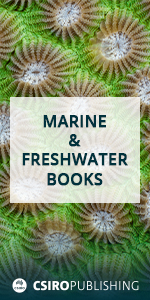
Environmental Chemistry
Volume 17 Number 5 2020
EN19206Chemical analysis and origin of the smell of line-dried laundry
 and Matthew S. Johnson
and Matthew S. Johnson 

Environmental context. The fresh pleasant smell of laundry dried outside in sunlight is recognised by most people, but despite decades of speculation the origin of the smell has not been demonstrated. We show that the smell of line-dried laundry is due to the unique combination of traces of atmospheric hydrocarbons, sunlight and a wet fabric surface. This surface photochemistry is likely to be widespread in the environment on surfaces of natural materials.
Environmental context. Safeguarding the quality of residential indoor air depends on exposure assessment of potential contaminants. Using online survey responses from households in Korea, and focusing on those households containing preschoolers, we created a database of exposure, characterising household insecticide usage patterns. Evaluating the combined inhalation exposure to insecticides available in retail markets will support efforts to improve residential indoor air quality and the health and safety of all inhabitants.
EN19252Decomposition of dimethyl polysulfides under solar irradiation in oxic aqueous solutions
Environmental context. The quality of drinking water can be greatly compromised by the presence of dimethyl polysulfides. We studied the rate and mechanism of decomposition of dimethyl polysulfides in aqueous solution under solar irradiation, and found that they decompose photochemically in seconds to minutes, i.e. much faster than under dark conditions. These results suggest that photochemical pathways of dimethyl polysulfide decomposition may prevail in euphotic zones of natural aquatic systems.
Environmental context. The toxicity of copper to aquatic life is highly dependent on its chemical form. In the vineyards of the Loire valley, mixtures of copper compounds are increasingly being used as fungicides. Our study investigating the origin and behaviour of dissolved copper on the land-sea continuum of the Loire advances our understanding of the chemical forms and fate of copper in estuarine systems.
Environmental context. The fate of silver nanoparticles (AgNPs) in aqueous systems could be influenced by the hydrophobicity of natural organic matter. We observed that the aggregation and dissolution of oppositely charged AgNPs were controlled by the selectivity and dynamics of sorption processes involving the nanoparticle surface and hydrophobic groups on natural organic matter. These findings will be helpful to understand the fate and effects of coated AgNPs in natural systems.



